Jatropha cuneata, Physicnut
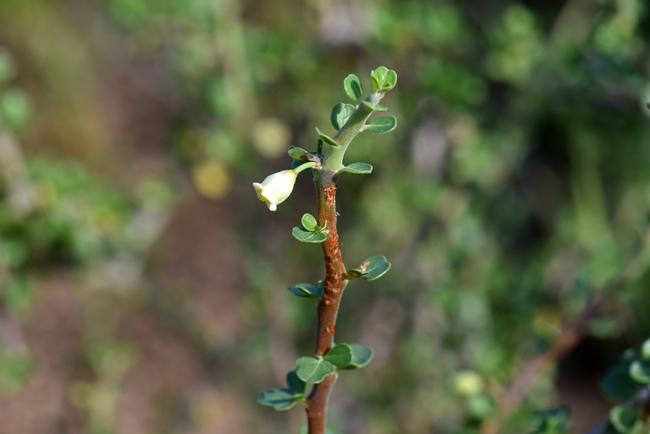
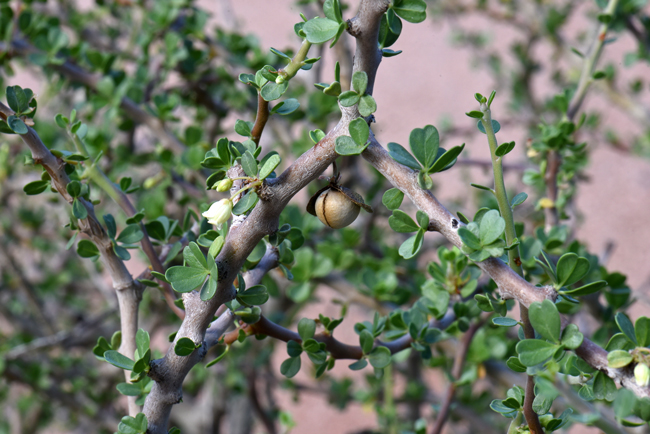
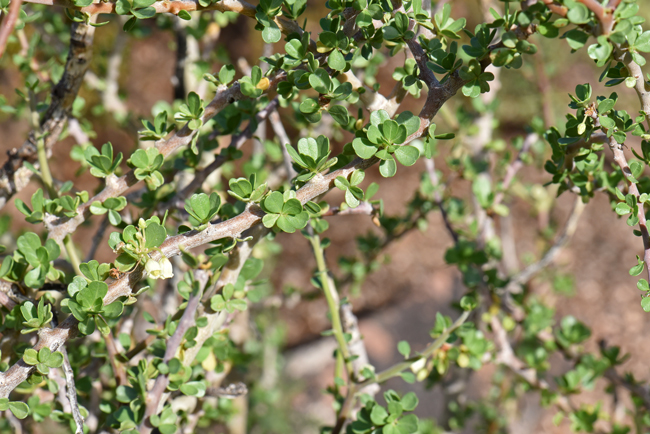
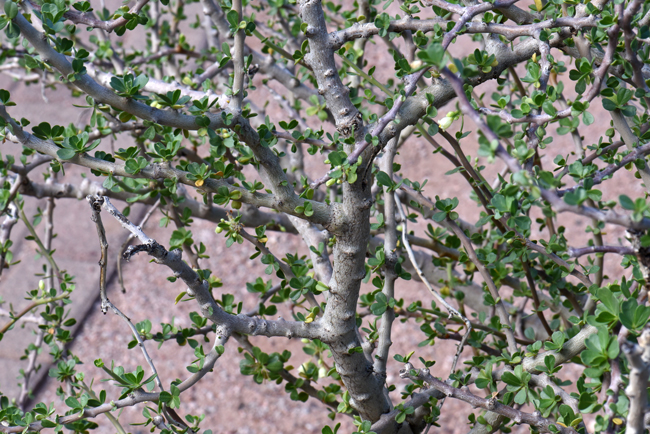
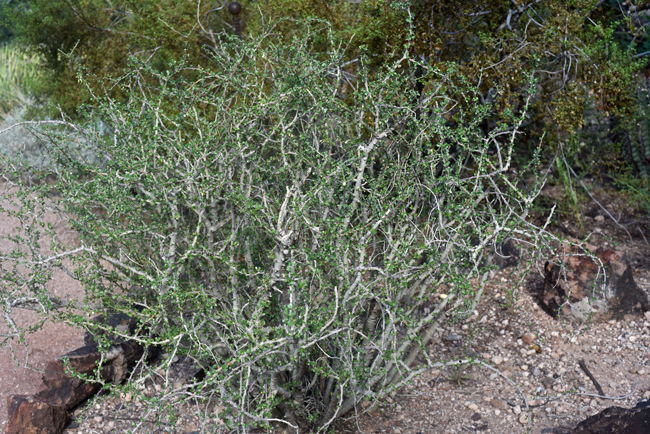
Scientific Name: Jatropha cuneata
Common Name: Physicnut
Also Called: Desert Limberbush, Leatherplant, Limberbush, Physicnut, Spanish (Sangre de Drago, Piñocillo, Batácora, Torote Prieto, Torote Amarillo, Matacora).
Family: Euphorbiaceae, Spurge or Euphorbia Family
Synonyms: ()
Status: Native
Duration: Perennial
Size: Up to 6.5 feet (2m)
Growth Form: Shrub; stems heavily branched, spreading, stems yellow to yellow-brown (gray), woody-succulent, glabrous, young shoots exude watery yellow latex and red in older shoots.
Leaves: Green; alternate, simple, deciduous, plants without leaves much of the year, leaves fascicles on short shoots, leaf blade obovate-spatulate, leaf margins entire, leaf surfaces glabrous, if the leaves are lobed they are usually palmate.
Flower Color: White, cream or pale yellow corolla, inflorescences on short shoots, cymes or flowers solitary; dioecious; fruiting late spring and summer, fruits are capsules.
Flowering Season: July to August
Elevation: 1,000 to 2,000 feet (0 to 600 m).
Habitat Preferences: Dry mesas, rocky limestone mesas, sandy areas, slopes and bajadas.
Recorded Range: Jatropha cuneata is rare in the United States where it is found only in Arizona and only in Pima County, mostly in Organ Pipe Cactus National Monument and in Yuma County, in the Cabeza Prieta National Wildlife Refuge. It is also found in western Mexico and throughout Baja California.
North America & US County Distribution Map for Jatropha cuneata.
U.S. Weed Information: No information available.
Invasive/Noxious Weed Information: No information available.
Wetland Indicator: No information available.
Threatened/Endangered Information: No information available.
In the Southwestern United States: Arizona has 4 species of Jatropha, California, Nevada and Utah have 0 species, New Mexico has 1 species and Texas has 3 species. All data is approximate and subject to taxonomic changes.
Comments: Jatropha cuneata, or Physicnut as it is commonly called is found only in Arizona in Pima and Yuma Counties.
The type species for Arizona, (J. arizonica) is from the Santa Rita Mountains, Pima and Santa Cruz County, (Pringle).
In Southwest Desert Flora also see Ragged Nettlespurge, Jatropha macrothiza.
The Flora of North America reports that the stems of Physicnut or Limberbush have been used in basket making. Additionally, the stems are used for basket making by the Seri people in Sonora, Mexico.
In 2007, Goldman Sachs cited Jatropha curcas as one of the best candidates for future biodiesel production.
The by-products of making biodiesel, may be used for fish or animal feed after detoxification.
According to Kearney and Peebles, 1960, a similar related species J. spathulata is said to have been in Mexico medicinally and for the manufacture of various articles from the tough, flexible stems.

